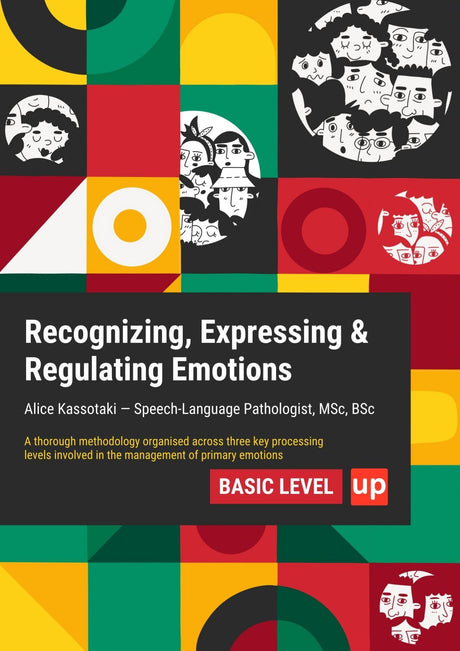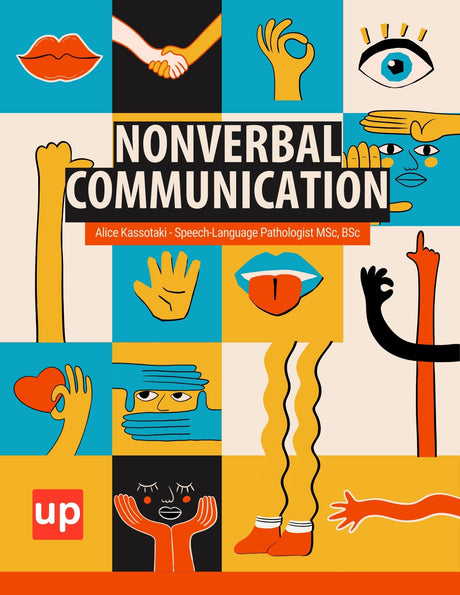Effective communication is the cornerstone of connection, learning, and self-expression. While we often focus on understanding what others say—known as receptive language—the ability to share our own thoughts, ideas, and feelings is equally vital. This is the domain of expressive language, the skill of using words, gestures, and writing to convey meaning. For parents, educators, and individuals seeking to enhance communication, fostering these skills can be transformative. This article provides simple, effective, and evidence-based activities designed to boost expressive language skills and empower confident communication.
Key Points
- Expressive language enables individuals to convey thoughts, emotions, and ideas through words, gestures, or writing, forming the foundation of effective communication and connection.
- Parents and educators can strengthen expressive language by modeling language, expanding on speech, creating opportunities for communication, and integrating fun, play-based learning activities.
- For individuals with significant communication challenges, early intervention and the use of Augmentative and Alternative Communication (AAC) systems under the guidance of a Speech-Language Pathologist can be life-changing.
Introduction: Unleashing the Power of Words

Expressive language allows us to name objects, ask questions, craft stories, and build relationships. It’s the output of our linguistic system, working in tandem with receptive language, which is our ability to comprehend information. A child who can point to a cookie when asked ("Show me the cookie") is using receptive skills, while a child who says, "I want cookie," is using expressive skills. Difficulties in this area, sometimes indicative of a language disorder, can be frustrating, but targeted activities and consistent practice can make a significant difference, often complementing formal speech therapy.
Foundations of Expressive Language: Understanding the Building Blocks
Before diving into activities, it’s crucial to understand what constitutes expressive language. It’s more than just a large vocabulary; it’s a complex interplay of different linguistic components that work together to create clear and meaningful communication.
The Domains of Expressive Language: Beyond Just Words
Strong expressive language skills are built on several key domains:
- Semantics: This refers to the meaning of words and the development of vocabulary. It involves not just knowing words but understanding their relationships and nuances.
- Syntax: This is the set of rules for combining words into grammatically correct sentences. Proper syntax ensures that our messages are structured in a way that is easily understood.
- Pragmatics: This is the social side of language. It governs how we use language in different contexts, including turn-taking in conversations, maintaining topics, and understanding non-verbal cues.
Recognizing Typical Expressive Language Development
While every child develops at their own pace, there are general milestones. A toddler might start by combining two words ("more juice"), while a preschooler begins to tell simple stories. As they grow, their sentence structure, or syntax, becomes more complex, and their use of social language (pragmatics) becomes more sophisticated. When a child significantly lags behind these milestones, it may be beneficial to consult with speech-language pathologists.
Core Strategies for Boosting Expressive Language: The "How-To" for Parents & Educators
Effective language development isn't about drills; it's about integrating supportive strategies into everyday interactions. These core techniques create a language-rich environment where expressive skills can flourish.
Modeling Language: Showing, Not Just Telling
Modeling is one of the most powerful tools. This involves narrating your own actions, thoughts, and feelings using clear, simple language. Instead of just grabbing milk from the fridge, you might say, "I am thirsty. I'm getting the cold milk." This provides a constant stream of well-formed sentences and rich vocabulary in a natural context.
Expanding and Extending: Building on Their Words
When a child or individual speaks, you have an opportunity to build on their utterance. If they say, "Big dog," you can expand on the grammar by replying, "Yes, that is a big dog." You can also extend their idea by adding new information: "That big dog is running fast!" This validates their communication and gently introduces more complex syntax and vocabulary.
Creating Communication Opportunities: The "Need" to Speak
Sometimes, we can be so helpful that we anticipate every need, reducing the opportunity for someone to communicate. Create a gentle "need" to speak by placing desired items slightly out of reach or offering choices ("Do you want the red block or the blue block?"). This encourages them to use their expressive language skills to make requests and state preferences.
Empowering Through Repetition and Consistency
Language acquisition thrives on repetition. Hearing words and sentence structures repeatedly in different contexts helps solidify understanding and encourages use. Whether it's reading the same favorite books or playing familiar games, consistency provides the predictable framework needed for language to grow.
Using Visual Supports: A Bridge to Understanding and Expression
For many learners, visuals can be a powerful bridge. This can range from picture schedules for daily routines to choice boards with images of toys or snacks. Visuals reduce the cognitive load of processing spoken language, freeing up mental resources for formulating an expressive response.
Simple & Effective Activities for Expressive Language Development

The best language learning happens when it’s fun and engaging. These activities are designed to target specific expressive language goals through play, storytelling, and daily routines.
* Play-Based Activities: Learning Through Fun
Play is the natural language of childhood and a powerful tool for all ages.
- Pretend Play: Scenarios like playing house, restaurant, or doctor create countless opportunities to practice vocabulary, syntax, and pragmatics. Encourage turn-taking in conversation and asking questions related to the roles.
- "I Spy": This classic game is fantastic for building descriptive vocabulary and semantics. To target syntax, encourage full sentences like, "I spy something that is red and round."
- Barrier Games: Set up a barrier (like a large book) between two players. Each player has identical sets of objects (like blocks or stickers). One person gives instructions ("Put the blue square next to the yellow circle") to see if their partner can replicate their design, targeting specific vocabulary and clear sentence structure.
* Storytelling & Literacy Activities: Weaving Narratives
Reading and storytelling are essential for language development.
- Shared Reading: Don’t just read the words in books. Pause to ask open-ended questions like, "What do you think will happen next?" or "How is that character feeling?" This encourages prediction and emotional vocabulary.
- Story Retelling: After reading a book, ask your child to retell the story in their own words. Use picture cards or the book’s illustrations as prompts. This is an excellent activity to target narrative structure and syntax.
- Create Your Own Story: Start a story with a single sentence, "Once upon a time, there was a friendly dragon who loved tacos," and take turns adding the next sentence. This collaborative game makes building a narrative fun and interactive.
* Daily Routine & Practical Activities: Language in Context
Integrate language practice into everyday tasks.
- Cooking and Baking: Following a recipe involves sequencing, vocabulary (e.g., "mix," "pour," "bake"), and asking/answering questions. Have your child narrate the steps as you do them.
- Grocery Shopping: Turn a trip to the store into a language game. Ask your child to find items, describe them ("Let's find the long, yellow bananas"), or categorize them ("Is milk a fruit or a dairy product?").
Beyond Spoken Words: Supporting All Communicators

Expressive communication is not limited to speech. It’s essential to recognize and support all forms of expression to ensure every individual has a voice.
Recognizing Diverse Communication Needs
Some individuals may be non-speaking, have limited speech, or have motor-planning difficulties that make speech challenging. Their receptive language skills may be very strong, but they require other methods to express themselves. Honoring gestures, signs, and other non-verbal cues is the first step in supporting their communication.
Augmentative and Alternative Communication (AAC) Systems
AAC encompasses all the ways someone communicates besides talking. This can range from low-tech options like picture boards to high-tech speech-generating devices. For individuals with significant expressive language challenges, an AAC system can be a vital tool, providing a robust way to express complex thoughts and needs. Therapists can help determine the most appropriate system.
When to Seek Professional Support: Partnering with Speech-Language Pathologists
While these activities are beneficial for all, some individuals may require specialized support to meet their communication goals.
Recognizing Signs of Potential Concerns
If you have concerns about a child’s language development—such as a limited vocabulary for their age, difficulty forming sentences, or significant frustration around communication—it’s wise to seek a professional evaluation. Early intervention is key and can dramatically improve outcomes.
The Essential Role of Speech-Language Pathologists (SLP)
Speech-language pathologists (SLPs) are experts in communication. They can conduct comprehensive assessments to identify specific areas of difficulty related to expressive language and diagnose a potential language disorder. Based on this assessment, an SLP will create a tailored therapy plan with specific, measurable goals and use evidence-based techniques to target those skills.
Conclusion: Empowering Your Child's Voice
Boosting expressive language is a journey of connection, patience, and joyful interaction. By understanding the core components of language, implementing simple strategies, and engaging in fun, purposeful activities, you can create a rich environment that nurtures communication skills. Whether through play, reading books, or daily conversations, every interaction is an opportunity to build vocabulary, strengthen syntax, and enhance social communication. Remember that consistency is more important than intensity. By celebrating every attempt at communication and partnering with therapists when needed, you can effectively empower your child and help them unleash the profound power of their own voice.
Frequently Asked Questions (FAQ)
What is expressive language?
Expressive language refers to the ability to communicate thoughts, feelings, and ideas through speech, gestures, signs, or writing. It’s the active side of communication, allowing individuals to express themselves clearly and meaningfully in social, academic, and daily contexts.
How does expressive language differ from receptive language?
Receptive language is the ability to understand what others say, while expressive language involves using words and other communication forms to respond or share ideas. Both skills work together—strong comprehension supports clear expression, and expressive practice reinforces understanding.
What are the main components of expressive language?
Expressive language is built on three domains:
- Semantics (vocabulary): Understanding and using words meaningfully.
- Syntax (grammar): Combining words into well-formed sentences.
- Pragmatics (social use): Using language appropriately in social situations, such as taking turns or staying on topic.
What activities can help develop expressive language?
Activities that combine play, storytelling, and real-life experiences are most effective. Examples include pretend play, storytelling, reading together, cooking, grocery shopping, and conversation-based games like “I Spy” or “Barrier Games.” These make learning language natural and enjoyable.
How can parents and educators encourage expressive language at home or school?
They can model rich language, expand on what the child says, ask open-ended questions, and create situations that encourage communication (e.g., offering choices or waiting for a verbal response). Repetition and consistent exposure to language in daily routines are also essential.
What if a child has trouble speaking or expressing themselves?
Some children may struggle with speech or have limited verbal abilities. In these cases, supporting alternative communication methods—like gestures, signs, or picture-based tools—is vital to ensure they can still express their needs and thoughts.
What is AAC and who benefits from it?
AAC (Augmentative and Alternative Communication) includes tools and systems that help individuals communicate when speech is limited or absent. It ranges from simple picture boards to advanced speech-generating devices. A Speech-Language Pathologist can assess and recommend the best AAC system for each person.
When should someone seek professional support?
If a child consistently struggles to form sentences, has a limited vocabulary, or shows frustration when trying to communicate, it’s important to consult a Speech-Language Pathologist. Early assessment and intervention can significantly improve long-term language and communication outcomes.
Original content from the Upbility writing team. Reproducing this article, in whole or in part, without credit to the publisher is prohibited.
References
- American Speech-Language-Hearing Association (ASHA). (n.d.). Expressive and Receptive Language Disorders.
- Owens, R. E. (2020). Language Development: An Introduction (10th ed.). Pearson.
- Paul, R., & Norbury, C. F. (2012). Language Disorders from Infancy through Adolescence: Listening, Speaking, Reading, Writing, and Communicating. Elsevier.
- Fey, M. E. (1986). Language intervention with young children. Allyn & Bacon.
- McLeod, S., & Baker, E. (2017). Children’s Speech: An Evidence-Based Approach to Assessment and Intervention. Pearson.









